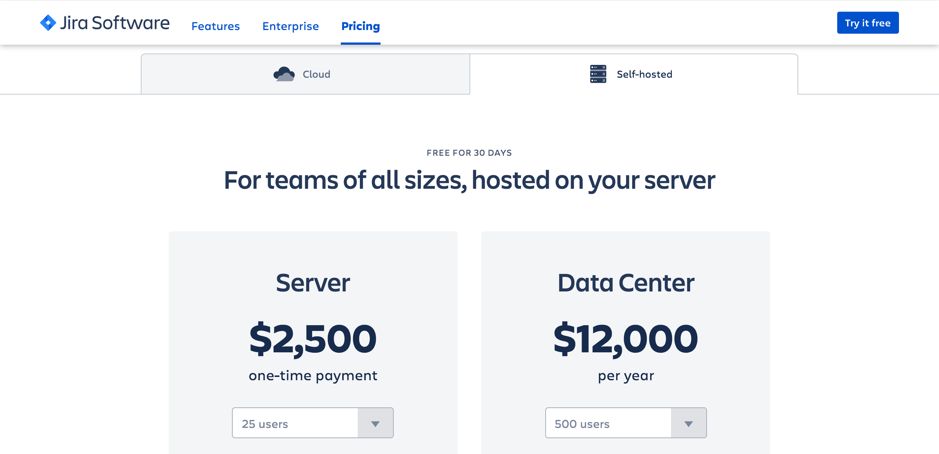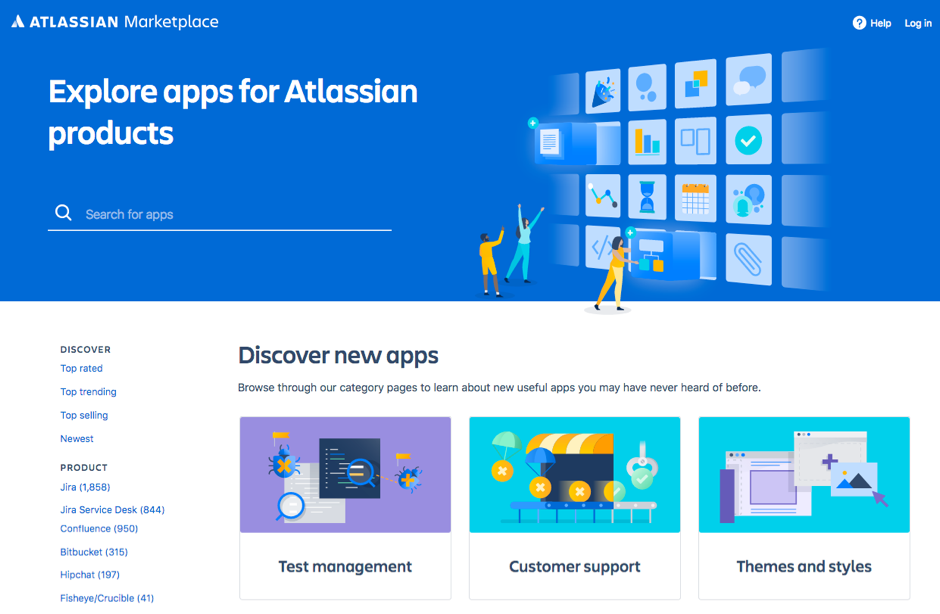Jira is proprietary software developed by Atlassian and you need to purchase the license to use it. The licensing is based on the number of users you have in the team who will be using the system, and it's very straightforward.
Let's say you have 15 developers, five managers, and two administrators then you would have, in total, 22 users using the system and to understand the license that you need to purchase, just check on the Atlassian website. In the case of 22 users, there's a slab of 25 users that you need to purchase.
You can go to the following link to check the license that you need to purchase:
https://www.atlassian.com/software/jira/pricing?tab=self-hosted
When you open this link, you'll be presented with a screen as shown in the following screenshot where you can choose the deployment type—Cloud or Self-hosted—and then, based on the number of users, the license cost will be displayed to you:
Figure 4
In the event the number of users increases in the future, additional licenses can always be purchased. It's advisable to keep in mind the expected usage of the tool in the next year at least. If, right now, there are 22 users but you know for a fact that this number will increase to 35 or 40, then it's better to buy licenses keeping in mind the future increase. This will save you some money, which isn't a bad idea at all.
There are various deployment options for using Jira that we'll discuss in this chapter but, to install Jira on your own server, you need to buy a license for a self-hosted deployment.






